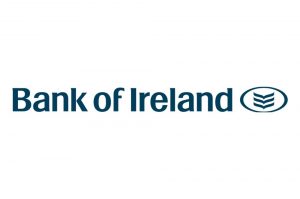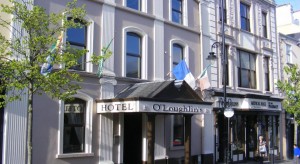
SME SECTOR CONTINUES TO SHOW INCREASED CONFIDENCE IN ECONOMY.
- Positive moves in 11 of 12 SME Business indicators.
- Current and Future employment best figures since winter 2007.
- Current Exports show slight decrease.
- Retail sector still the one sector in difficulty.
At the launch of the Quarterly SME Business Trends Survey for Q3 – 2013, today (11h October) by ISME, the Irish Small & Medium Enterprises Association, it was announced that SMEs in general expect further improvements in trading conditions over the coming year. The positive trends in 11 of 12 key business indicators show a continued and gradual improvement in the national economy. The only indicator showing a decrease was current exports, which has shown a zig-zag profile recently, which dropped by seven points, however this is counterbalanced by a 63% expectation of higher exports in the next 12 months.
Employment figures, both current and future are in the positive zone and record the best indicators since winter 2007, with net employment up to 6%, reflecting the live register figures, while a net 15% of employers expect to employ more in the next year. The two main areas of expected jobs growth are in exporting firms and services with a net 32% and 16% predicting more employment. Even in retail, which is still struggling, a net 5% of employers expect to take on more staff in the coming year.
ISME CEO Mark Fielding said: “It is imperative that the budget, next Tuesday, does nothing to stifle the positive sentiment and trends in the indigenous SME sector. While the majority of SMEs continue to battle out of recession, the mindset is positive and cautiously expansionary. The main focus must remain on cost curtailment and any government budgetary intervention must not interfere with the gradual turnaround.”
The survey was conducted in the first week of October, with over 1100 SME respondents. Half of the respondents employ less than 10, while a further 40% employ between 11 and 50 and one in ten employ between 51 and 250.
For graphs please refer to Press Releases
Business Confidence and Expectations
Both Business Confidence and Expectations experienced large increases in this quarter. Business Confidence has increased by 18 points to 28% and Business Expectations have increased by 12 points to 32%. This is the fourth consecutive quarter of growth for these indicators which had previously followed a zig-zag pattern.
Exporters and Manufacturers reported confidence levels of 49% and 36% respectively and business expectation levels of 45% and 52%. The Services sector saw a 25 point growth in business confidence from 7% to 32%.
The only sector whose business confidence decreased in Q3’13 was Retail, which saw a drop of 5 points from -4% to -9%. It is also the only sector to report a negative confidence rating. However, expectations in the sector have increased from -4% to 5%. ISME has long called for the establishment of a Retail Strategy Group.
Business Environment
Profitability Expectations were positive for the first time since the beginning of the recession at 14%. This indicator had previously been negative or neutral since Q3’08. The overall business environment perception, though still negative, improved by 17 points to -12%. Retailers reported a worrying -32% rating for profitability expectations, a drop of 13 points since the last quarter. Their perception of the business environment has improved slightly but continues to be a negative -36%.
Exporters, Manufacturers and Services have profitability expectations of 40%, 33% and 11% respectively.
Exporters and Manufacturers reported positive perceptions of the business environment for the first time this year at 12% and 7%.
Current & Future Sales
Current Sales received a positive rating for the first time since Q2’08. This nine point increase to 9% is a very positive development for SMEs and the wider economy. Sales expectations are also very positive and have increased by 18 points to 25%.
Despite these positive indicators it must be noted that the current sales of Exporters dropped in this quarter by 19 points from 26% to 7%. However, their sales expectations are a very high 60%.
The sales situation for Retailers remains bleak at minus 23%. The sales expectations of Retailers for the next twelve months have dropped from -15% to -23%.
Current Sales for Manufacturers have increased from -2% to 26% and their sales expectations increased by 27 points. In contrast to Q2, the Services sector reported positive ratings for both current and future sales in this quarter.
Employment
Current employment levels have increased for the fifth consecutive quarter from 4% to 6%. This increase was largely led by the Manufacturing sector which saw a 23 point surge in their current employment rating. The Services sector also saw employment increase from 3% to 6%. Retailers and Exporters saw employment drops of 12 points and 1 point respectively though both are more positive this quarter about future employment levels than they had been previously.
Exporters are also optimistic of creating further employment in the next twelve months as this rating went from 18% to 32%. Manufacturers are less positive (-2 points) about further employment growth and the Services sector saw an increase of ten points for this indicator.
The ESRIs latest economic commentary predictions are in line with these positive findings in relation to future employment levels.
Investment
SMEs are showing more of an appetite for investment than they had in the previous quarter, with both current and future investment figures showing an increase to 26% and 23%. These indicators are showing a very positive trend and represent the optimistic feeling within the SME sector. Even retailers are posting an increase in investment in their businesses.
A slight worry is the small drop in future investment figures for exporters and manufacturing.
The main issue for all sectors is the availability of bank finance to fund the investment proposals and this situation will continue to hold back the nascent revival of the economy unless the government maintains a strong push on the rescued banks.
Exports
The only key indicator to experience a decline in this quarter was current exports. This indicator continues to follow a zig-zag pattern and has not experienced a sustained period of growth since 2006. This decrease in current exports is causing the employment and sales expectations decreases for the sector discussed earlier.
However, export expectations increased by 14 points from 49% to 63% in this quarter. This shows a positive outlook for the sector which has been the most positive sector since the recession began. The graph shows that in previous quarters where current exports fell, the future export expectations usually fell also. This trend was not repeated this time which shows that SMEs are more optimistic about the export market despite the current decrease.
The Association calls on the Government to assist the recovery by:
- Reducing government influenced business costs to below the EU average.
- Tackling the banking crisis to ensure real and measurable access to credit for viable SMEs.
- Outsourcing more state sector services to SMEs
- Reforming the social welfare system to make it more profitable to work
- Expanding the export capacity of the SME sector through soft supports
- Supporting micro business through the County and City Enterprise boards, without interference from local government.
- Attacking the scourge of ever-increasing black economy activity.
In conclusion, Fielding reiterated the call for restraint both by Government in the Budget and by employees in their wage expectations. “It is of the utmost importance that the fragile revival in the economy is nurtured and that there is a continued acceptance that there is still a long way to go. The softening of austerity must not be a signal to the trade union movement to slap in wage claims. The economic realities of Ireland post-troika must be understood and Government, employers and employees must be prudent, productive and continue to work on the economic revival.”
For graphs please refer to Press Releases












